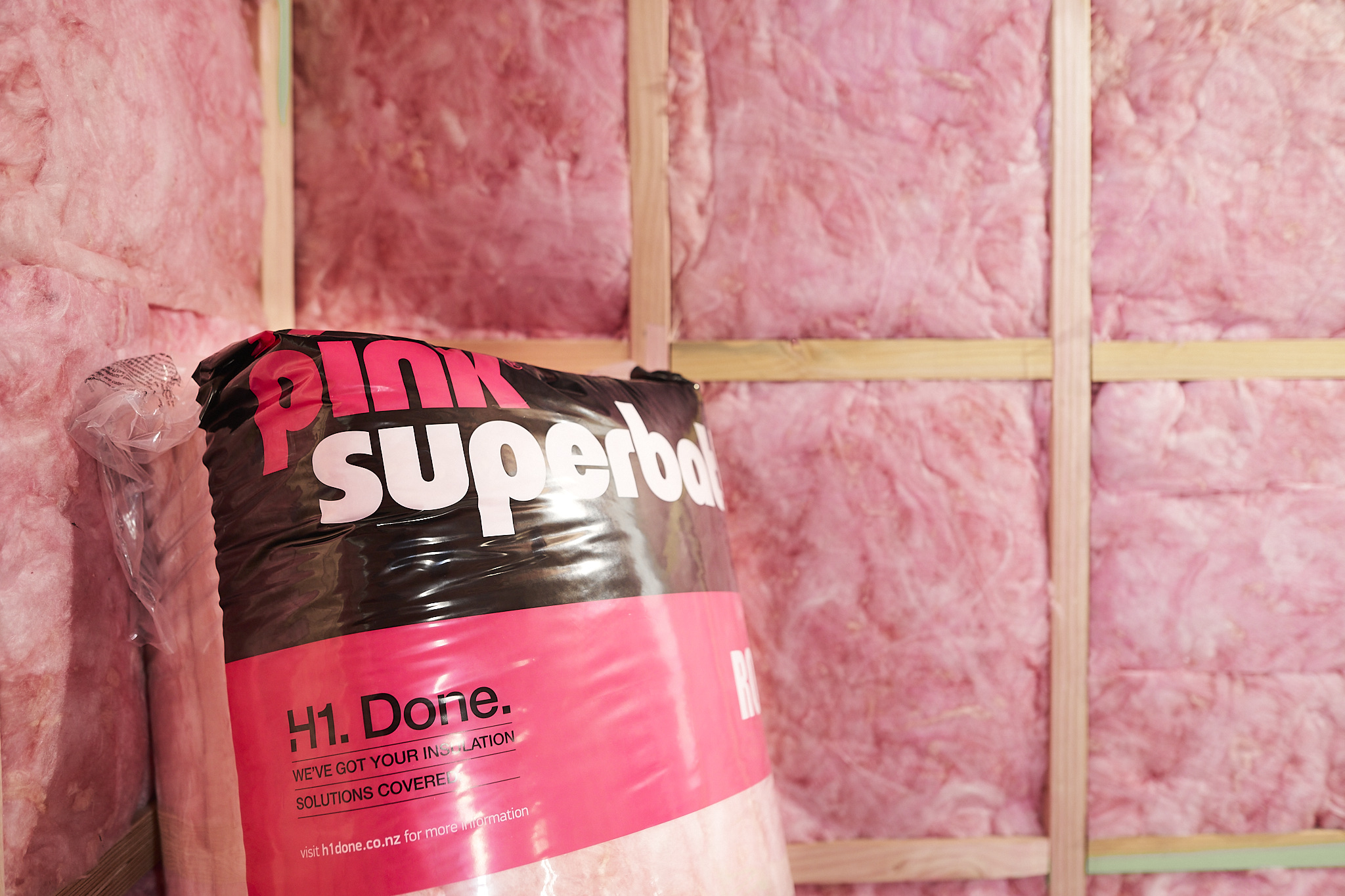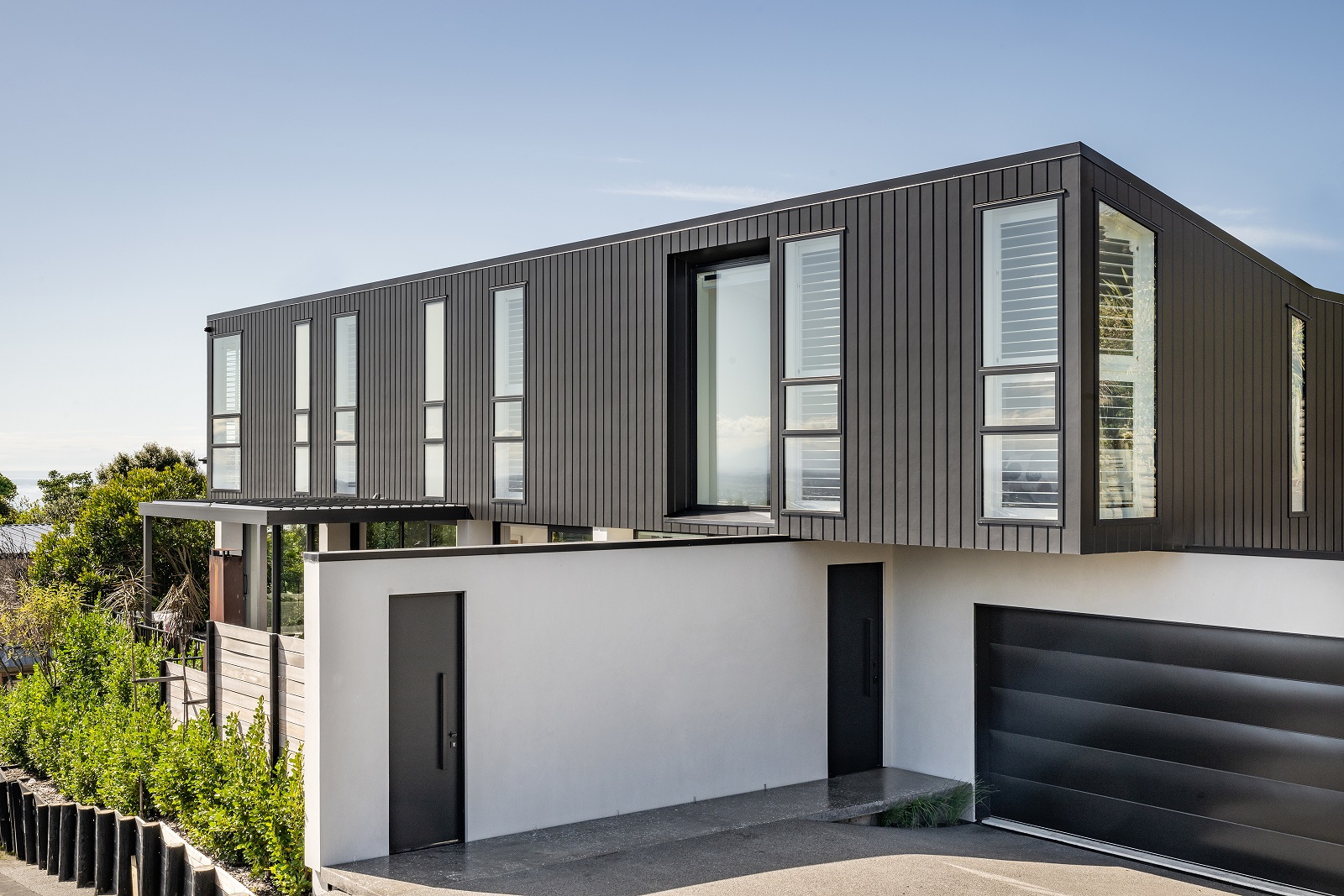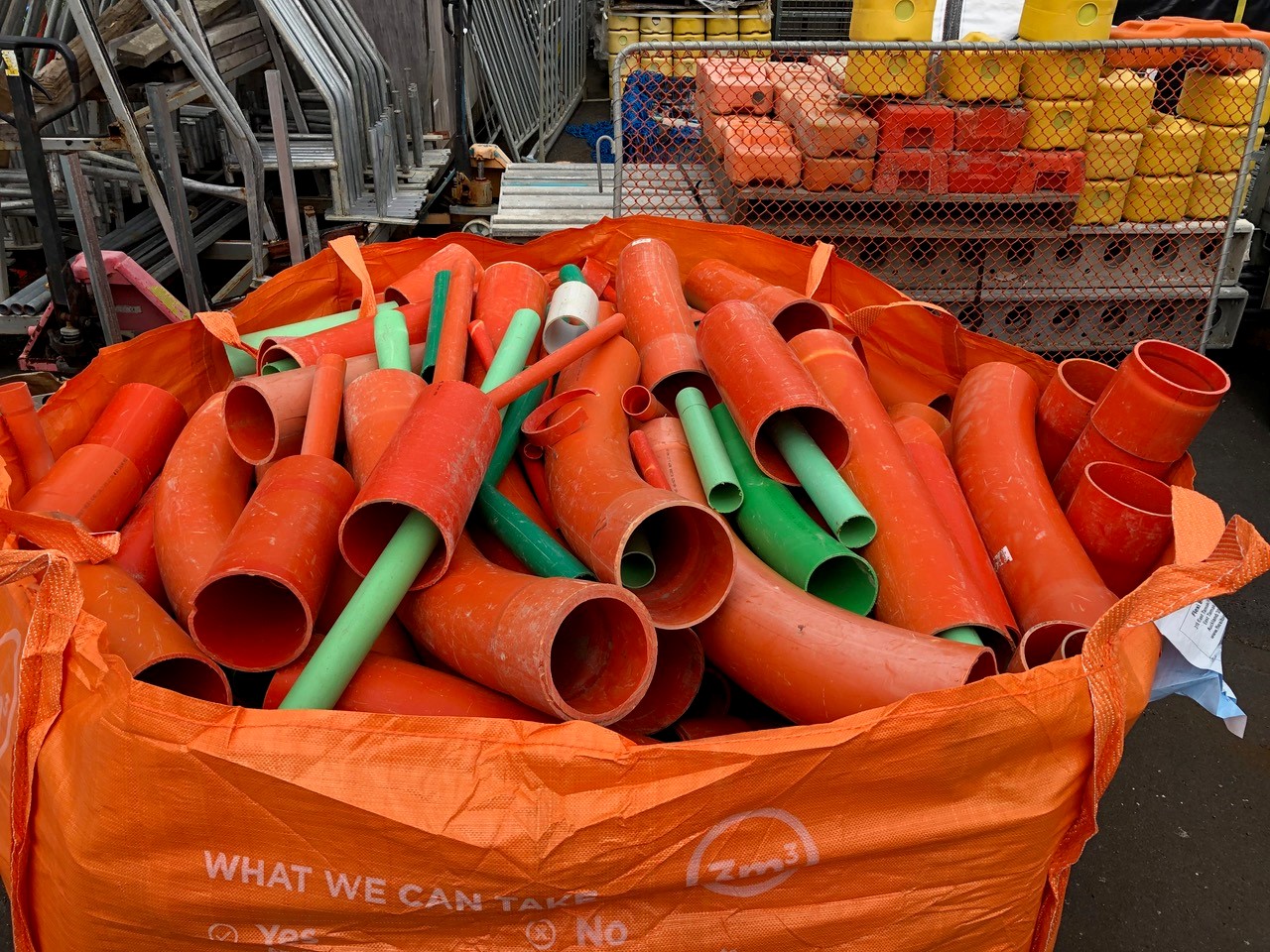Inspired by nature and emboldened by the form of Sydney’s Opera House, an apartment complex called The Wave shows a playful sense of energy and momentum, echoing its dramatic location.
Standing on Skyttehus Bay, in the port district of Velje in Denmark, the five rounded peaks of The Wave add drama to the cool blue waters of the fjord. The buildings are a response to the area’s rolling countryside, which make it unusual, because Denmark is a nation that is otherwise pancake flat.
Architect Henning Larsen was inspired by the local terrain and also drew encouragement from fellow countryman Jørn Utzon, who designed Sydney’s most famous building. Sadly Larsen died in 2013 and never lived to see his ultimate vision realised.

Construction began in 2006 but the 2008 financial crisis brought The Wave to a grinding halt. For years just two of the project’s five residential buildings stood complete.
Despite this, Larsen’s industry peers were impressed, and his work won early plaudits. The apartment complex picked up a number of design and industry awards, including a local prize for Building of the Year, Britain’s Civic Trust Award and architecture’s prestigious ABB LEAF Award.
Thankfully construction resumed in 2015 and The Wave‘s five towers of nine stories are now finished. They provide 14,000 square metres of living space in 105 apartments. Those at the top of each tower are double-height pentouses. Most apartments have sold but if you are quick you might be able to secure a 250 sq. metre duplex at the top for NZ$ 2.9 million.
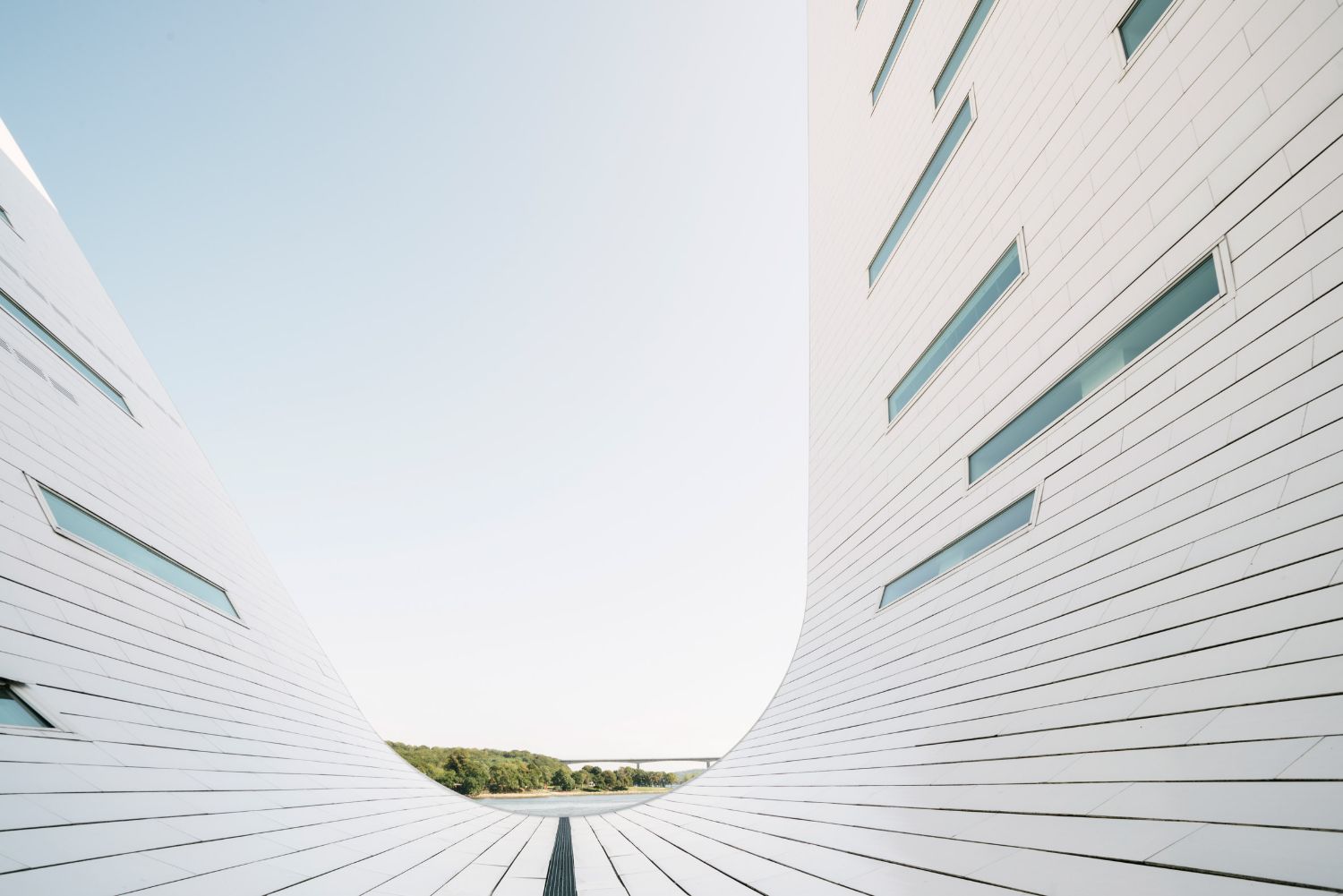
The edge of each building creates an eave over the glazed apartment facades they envelope. Every apartment has a balcony to take in the views, privacy screens hiding the neighbours and windows to flood rooms with light.
Larsen has kept his interiors deliberately simple, allowing residents to focus on the dramatic scenery of the fjord to the east, or the town of Velje, which lies stretched out below to the west. Wooden floors feature throughout, and carry across the balconies.
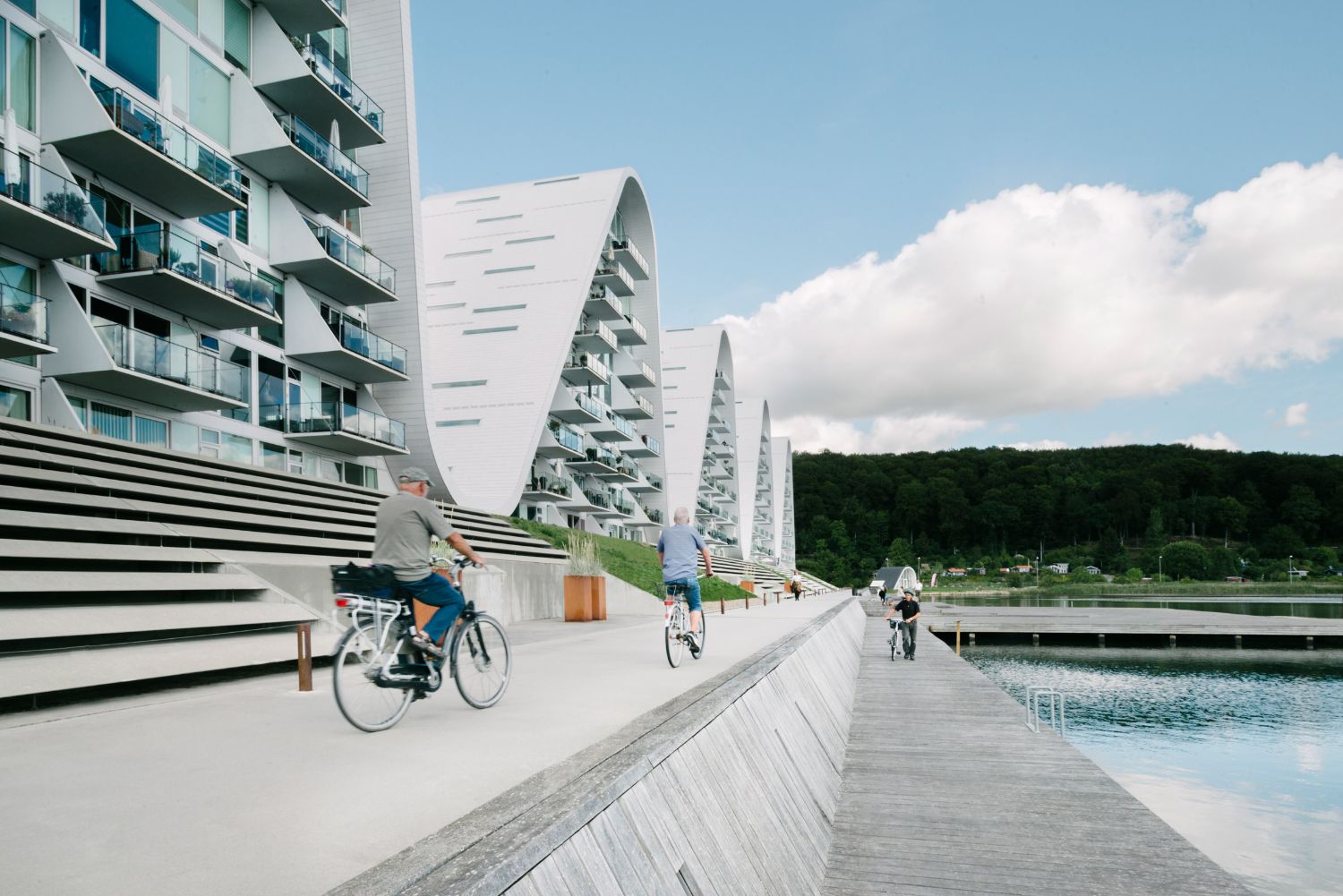
The complex is fronted by a long eastern promenade overlooking the fjord and a set of steps and a large deck allow strollers access to the waters of the bay. The locals hope that the dynamic structure will impart new energy to Velje and lead to regeneration of the waterfront.
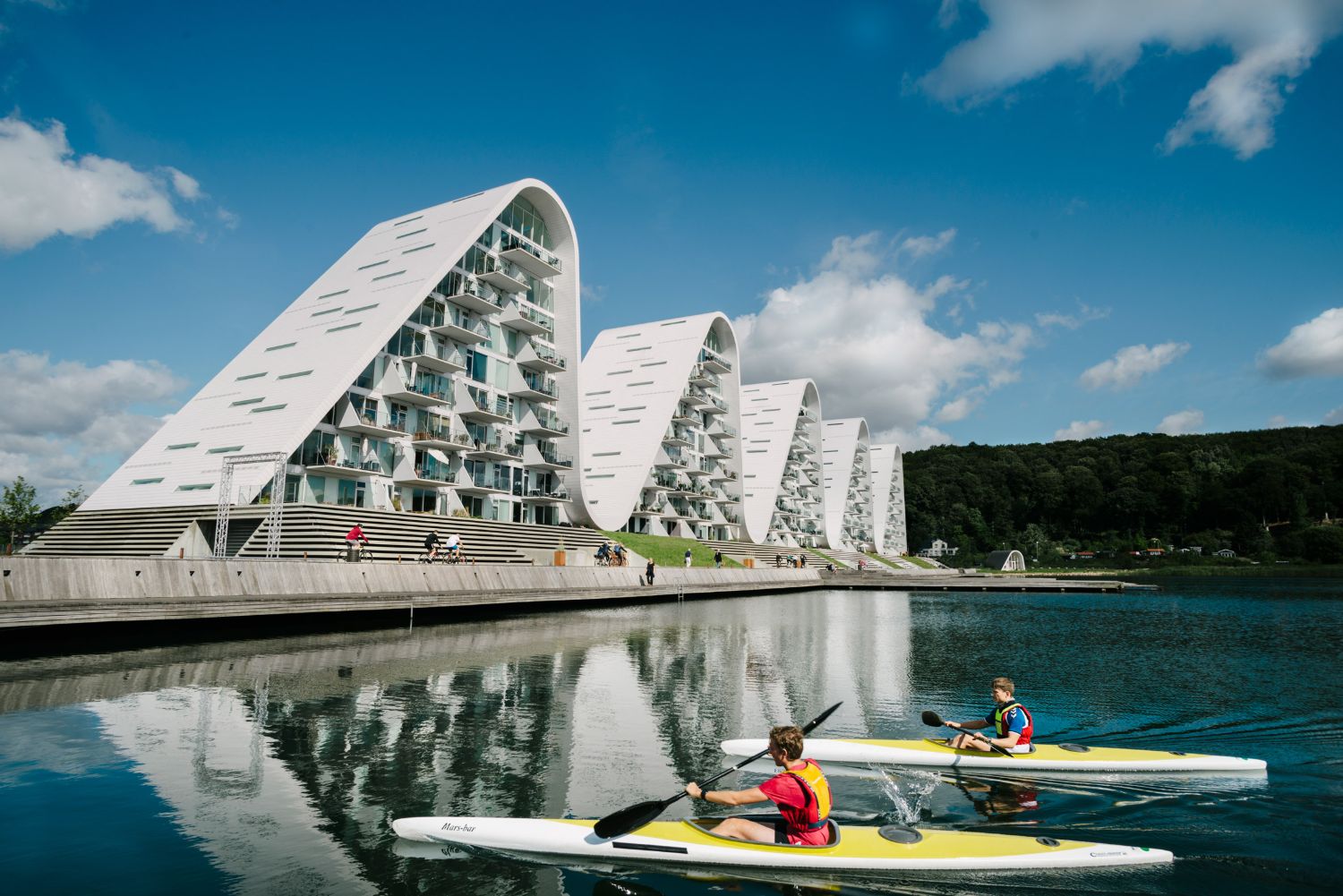
Confidence about a promising future appears well placed because a restaurant and rowing club are new evidence of the momentum building on this edge of the Baltic.

